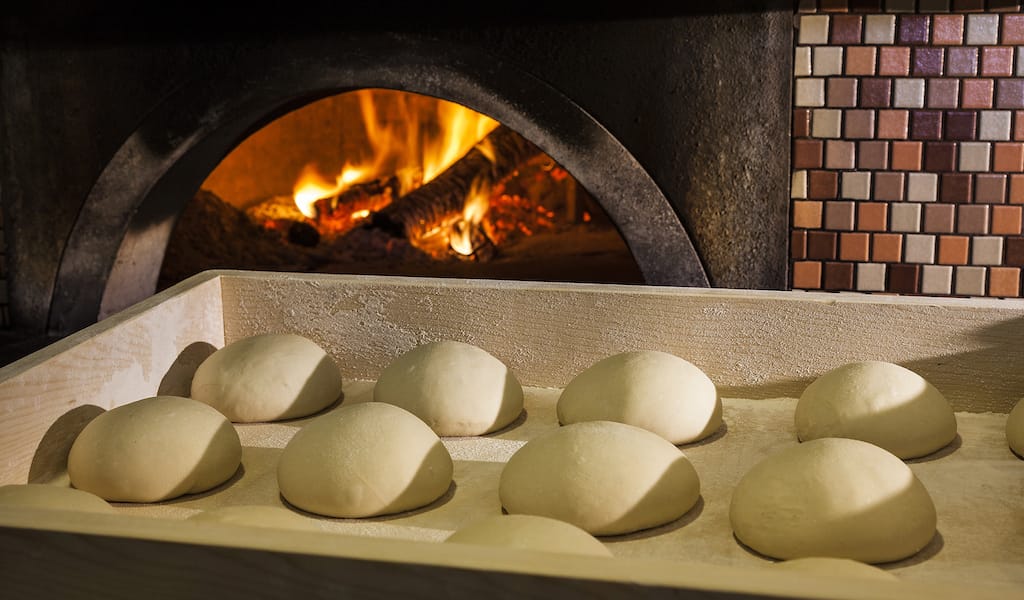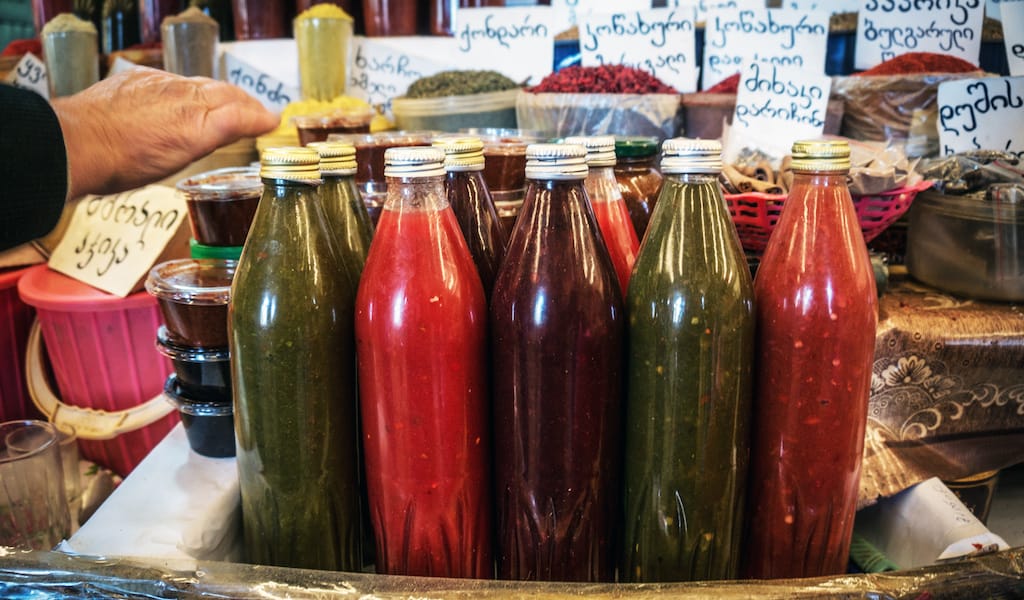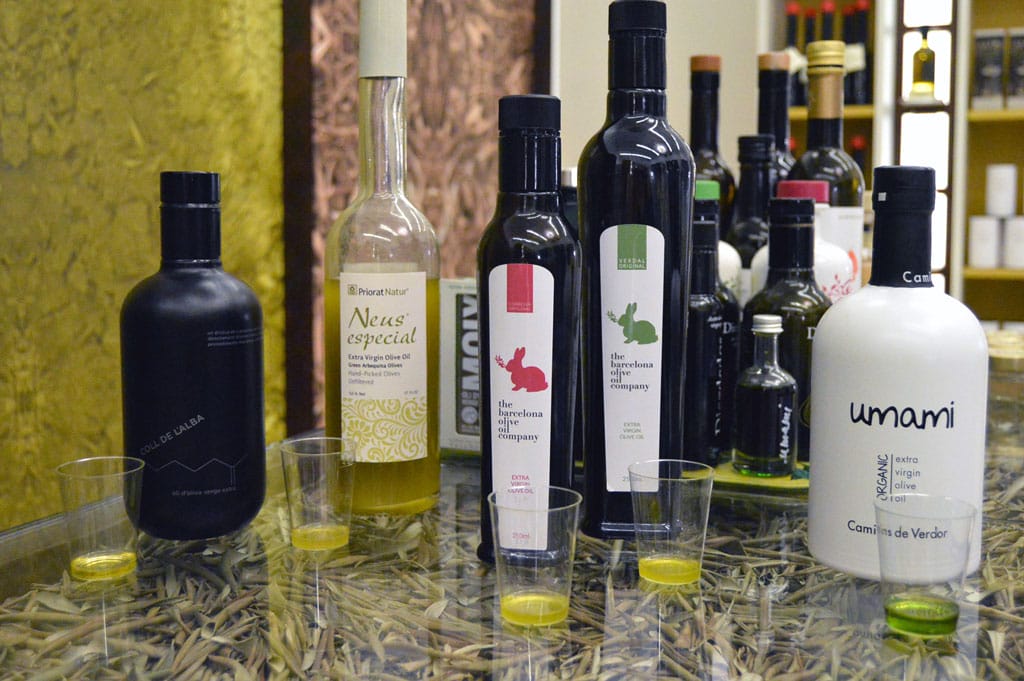Once the Christmas nativities are packed away, after the New Year’s cotechino sausage and good luck lentils have been eaten and the Befana witch has filled epiphany stockings with candies, something strange happens in the old center of Naples. It erupts in flames.
As the January sun sets, just as the days begin to lengthen, Neapolitan men light small bonfires in the dark alleys and decadent piazzas that lurk beyond Via Foria, the ancient boulevard that slices through the town’s Forcella and Rione Sanità quarters. The fires begin small. Men merrily douse bits of the Gazzetta dello Sport with gasoline, searching specifically for errant wrinkled pictures of Higuaín, loathed former Napoli footballer traded to Juventus.
With cigarettes dangling from their lips, these men light the newspaper clippings afire and throw the flaming wads into stacks of assorted kindling: old lacquered Ikea furniture mixed with the occasional snapped twig. Soon children gather to feed the fire. One throws in a decapitated doll, another the tattered pink seat from a tricycle. Squat housewives shout, in swiftly truncated dialect, “Feed the fire with this!” as they throw down household debris from nearby balconies. A violently ripped purple negligėe comes raining down followed by a heart-shaped pillow spewing stuffing – perhaps the result of love gone sour. A dirty plastic lawn chair missing a leg lands square in the middle of the burgeoning bonfire.
As it grows darker, the fire larded with old toys, rotten food, discarded cassette tapes and broken furniture, grows to beastly proportions. It is taller than some nearby buildings. Unconcerned children run around the fire, giggling and goading friends to venture closer. Their older siblings light Roman candles and bottle rockets and shoot them indiscriminately into back alleys. Middle-aged men with prominent paunches light their cigarettes with the bonfire’s flame and start a companion fire to grill sausages and roast chestnuts. Women lower down cooked friarielle (broccoli rabe) and buns through a bucket pully system from their balconies and tell nobody in particular, “Make me some merende (snacks).”
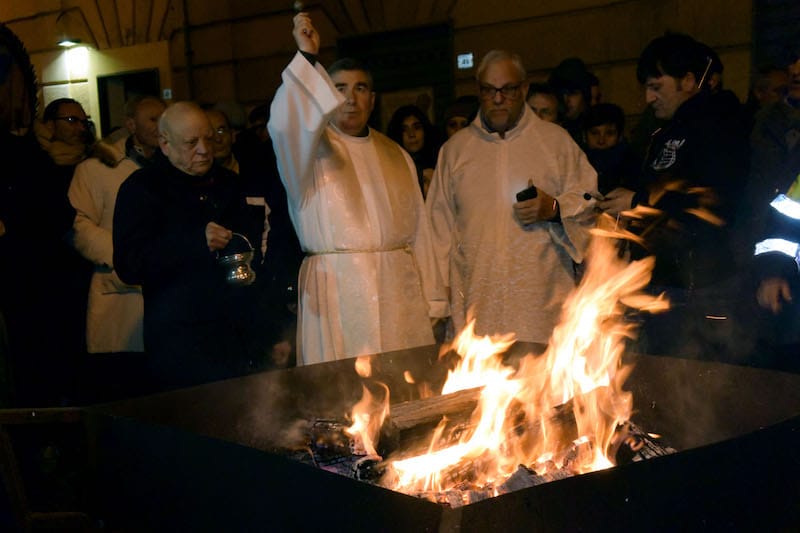
We wouldn’t be surprised if the uninitiated thought this was the foreplay to some sort of ritual sacrifice. Far from it – these are celebrations for Saint Anthony the Abbot’s day. Each January 17, locals fete this patron saint of firemen, ironworkers, household pets and pizzaioli with massive bonfires. When the fires die out, women will collect the ashes to store in keepsake vials as protection against the dreaded malochio, the evil eye.
It’s unsurprising that the district predominantly hosting these bonfires is known as Borgo Sant’Antonio Abate or in the local dialect, ‘o Bùvero. According to local legend the flames of Saint Anthony’s fire purify, protect and provide. In the middle ages, his devotees cooked pigs on these bonfires and used the rendered lard to treat shingles, an affliction once referred to in some places as Saint Anthony’s fire.
In nearby Macerata, a small town in the province of Caserta, the bonfires of Saint Anthony are far more controlled but no less spiritually important. The town prepares year round to celebrate the feast of San Antonio Abate. The day begins with a procession that vaguely resembles Carnevale – that is until you notice the musical instruments, all fashioned out of farm implements. Nearly 2,000 locals take part in the procession, which culminates in the lighting and blessing of a mountain-sized bonfire.
To understand the Neapolitan fascination with and use of fire, one must go back to early Christian Egypt where Saint Anthony the Abbot, one of the first Christian monks, lived. There are various legends associating Saint Anthony with pigs, but one has it that he roamed the desert for years as an ascetic swineherd. According to this telling, the people on earth were cold without fire – at that time, all fire was in hell – and asked Anthony for help. So he went to the gates of hell with one of his piglets, but the demons only let the animal pass (dreaming, perhaps, of roast pork). To their chagrin, the porker began wreaking holy hell, to the point that Anthony was called in to calm the beast. While there, Anthony’s staff was thrust in the fire and, unbeknownst to the demons, he carried out the sacred flame hidden inside the staff. With this fire, man would cook, cure, cultivate and, of course, bake pizza in the Neapolitan wood-burning oven, the forno a legna.
Pizzaiolos continue to practice the tradition of pounding dough and baking it in wood-fired ovens as their forbearers had done in Pompeii.
There is evidence that wood-fired ovens similar to the ones used in Naples today were employed by the Ancient Greeks, and some posit that Greek mariners brought this technology with them to the city. Thanks to Vesuvius’ explosive eruption in 79 AD, we can turn to Pomepeii for gustatory evidence. Archeologists have unearthed 33 domed clay ovens, complete with chimneys, on the grounds of Pompeii. We know that bread was an important part of the Pompeian diet. The very volcano that would eventually lead to Pompeii’s demise actually contributed to her rise as an early producer of baked goods. The Greek geographer, philosopher, and historian Strabo observed that the area around Pompeii and Naples, as a result of the soil’s volcanic fecundity, was “the most blest of all plains, and round about it lie fruitful hills.” It turns out the slopes of Vesuvius were ideal for the growth of cereal grains, and that bread was to become a symbol of Pompeii. An engraving on the entrance to the walled town reads matter-of-factly, “Traveler, you enjoy bread at Pompeii.”
The process of grinding the grain to make the bread was arduous. However, the volcanic black lava rock of the region was ideal for shaping tools to grind the local cereals. The practice of crushing, grinding and pounding wheat through a mill was known as pistor and by 160 BC, as Cato documents, the tradesmen responsible for this grinding were known as pistore. When coupled with the ingenious design of the beehive clay oven with chimney, this gave rise to the baking of deceivingly simple, pliable, leavened breads called pinse, so named for the grinding and pounding required to produce them. The pinse would travel through the Roman Empire; years later, we would know its cousins as pissaladiere in Provence, pita in the Middle East and pizza in Naples.
In the early days of bread baking in Pompeii, pistore worshiped the god Fornax, the ancient personification of the oven. It is from Fornax that we also derive the word forno (oven), as in forno a legna. Every year on February 17, Pompeii’s guild of oven tenders celebrated Fornacalia, lighting and feeding fires in much the same way modern Neapolitans light fires in commemoration of Saint Anthony the Abbot’s day. Years later, Pompeii’s bakers would switch their pious devotions to the goddess Vesta, protector of the hearth – perhaps a testament to the reverence they harbored for the fire that fueled their precious ovens.
For all the early success Vesuvius afforded Pompeii’s vibrant grain economy, the volcano would eventually become the town’s undoing. But the traditions of the pistore live on today in the ancient vicolos and back alleys that thread through Naples’ historic center. Antonio Pace, President of Associazione Verace Pizza Napoletana (AVPN), Naples’ pizza comptroller, is fond of saying, “Pizza has no inventors. It has neither father nor owner. It is the fruit of Neapolitan ingenuity.” It is in this spirit that pizzaiolos continue to practice the tradition of pounding dough and baking it in wood-fired ovens as their pistore forbearers had done before them in Pompeii.
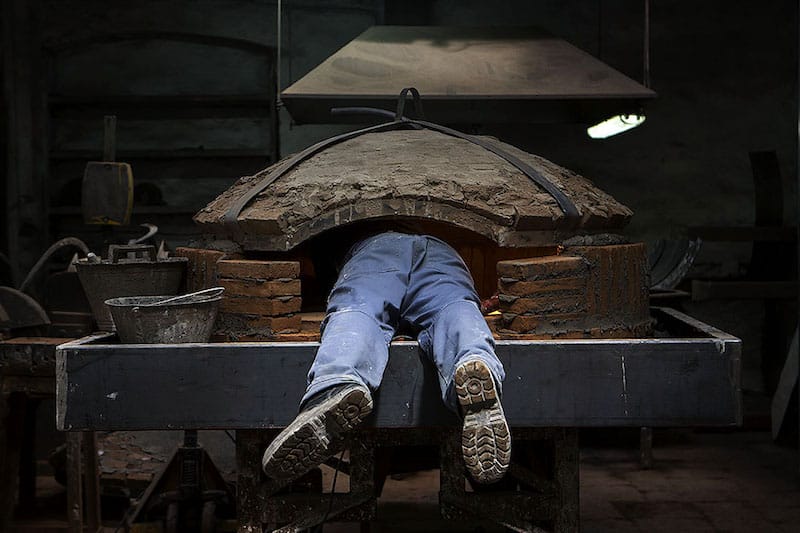
The Acunto family of Naples understands the importance of a well-built oven. They have been hand-crafting pizza ovens in Naples’ Centro Storico since 1892. Vincenzo Acunto, the factory’s original founder adhered to many of the same oven crafting methods observed in Pompeii. Today the Acunto domed ovens are handmade with bricks (that are fired in a kiln that has been in the family for over a century) and then painstakingly coated with ceramic tiles from nearby Vietri sul Mare. The best pizzaiolos in Napoli have used Acunto ovens for decades, and they have been shipped all over the world: to Japan, the United States and the Middle East.
Building the oven that cooks the pizza is only half the battle. After that, it is up to the pizzaiolo to properly tend the flames to create the perfect wood-fired Neapolitan pizza. AVPN regulates the placement of wood, temperature and even type of wood used in the crafting of pizza. To avoid singeing the pizza or creating an off-putting smell, traditional pizzaiolos exclusively use beech or oak wood that is well seasoned (usually for 6 to 8 months post-harvest) and properly ventilated – it should never be damp! Premier pizzaiolo Enzo Coccia of Pizzaria La Notizia declares that a pizza oven must have a “water fumes purifier” near the top of the chimney to absorb almost all the soot that is formed in the furnace and thus avoid the dispersion of particles in the air. Furthermore, he states that you must light the wood by putting paper under the perch without resorting to solvent-based kits. Only after the oven reaches 435 to 490 degrees Celsius is it ready for a pizza. The pizza itself cooks in the time it takes a pizzaiolo to smoke a cigarette
Last year UNESCO granted Neapolitan pizza World Heritage status. Pizzaiolos across Naples declared Saint Anthony the Abbot’s day as world pizza day. While wood-burning appliances may be disappearing from modern cookery throughout the 21st century world, that is not the case in Naples. Shrouded under the protective gaze of Vesuvius, we know all too well that the very fire force that nourishes us could at anytime become our paradoxical demise. As the old saying goes, “Chi festeggia sant’Antuono, tutto l’anno ‘o pass’ bbuon” – “He who celebrates Saint Anthony’s day, passes the whole year well.” Judging by this year’s bonfires, it’s safe to say we’ll have another good year here in Bella Napoli. For that we pray to Saint Anthony the Abbot, Vesta and Fornax, content in our knowledge that if it all goes to pot, at least we have pizza.
Editor’s note: Our recurring Building Blocks feature focuses on foods and ingredients that are fundamental to the cuisines we write about.
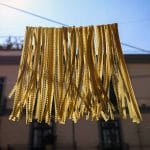 April 12, 2021 Building Blocks
April 12, 2021 Building Blocks
In the early 18th century, before there was the Spinning Jenny, the Cotton Gin and the […] Posted in Naples April 7, 2021 Sping (Food) Break 2021
April 7, 2021 Sping (Food) Break 2021
There is a day in February when we raise our noses to the sky like dogs and catch the […] Posted in Tbilisi October 19, 2020 Building Blocks
October 19, 2020 Building Blocks
Spain, Italy, Greece, Turkey, Portugal, Morocco, Tunisia – one thing that unites this […] Posted in Barcelona
Kristin MeliaGianni Acunto and Vicenzo Capuano and Vittorio Sciosia
Published on March 01, 2018
Related stories
April 12, 2021
Naples | By Kristin Melia
NaplesIn the early 18th century, before there was the Spinning Jenny, the Cotton Gin and the steam engine, a new machine was making waves in Gragnano, the grain capital of the Kingdom of Two Sicilies. It was the torchio, the pasta extruder. And it would radically and permanently change the diet of Italy. Just beyond…
April 7, 2021
TbilisiThere is a day in February when we raise our noses to the sky like dogs and catch the first teasing wisps of spring. Our eyes widen, we nod and chime with giddy grins, “It’s coming.” Then the weather turns with a cold snap or even snow and we forget all about spring until one…
October 19, 2020
BarcelonaSpain, Italy, Greece, Turkey, Portugal, Morocco, Tunisia – one thing that unites this swathe of the Mediterranean is olive oil, whose use in the Fertile Crescent can be traced back to 6000 B.C.E. Olives arrived in the southern part of the Iberian Peninsula around 9th century B.C.E. with the Phoenicians. Ancient Rome saw huge quantities…







































